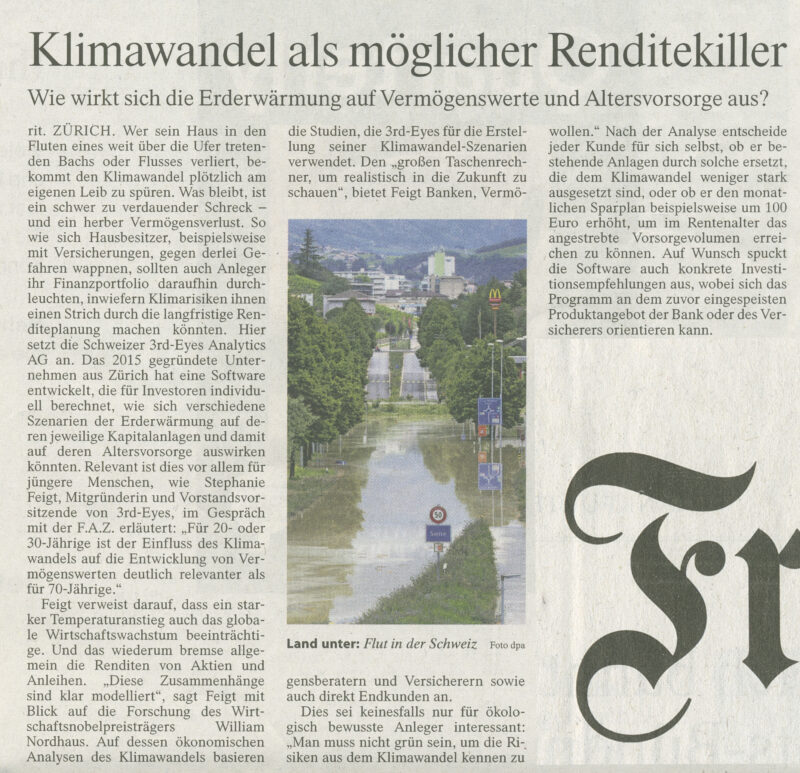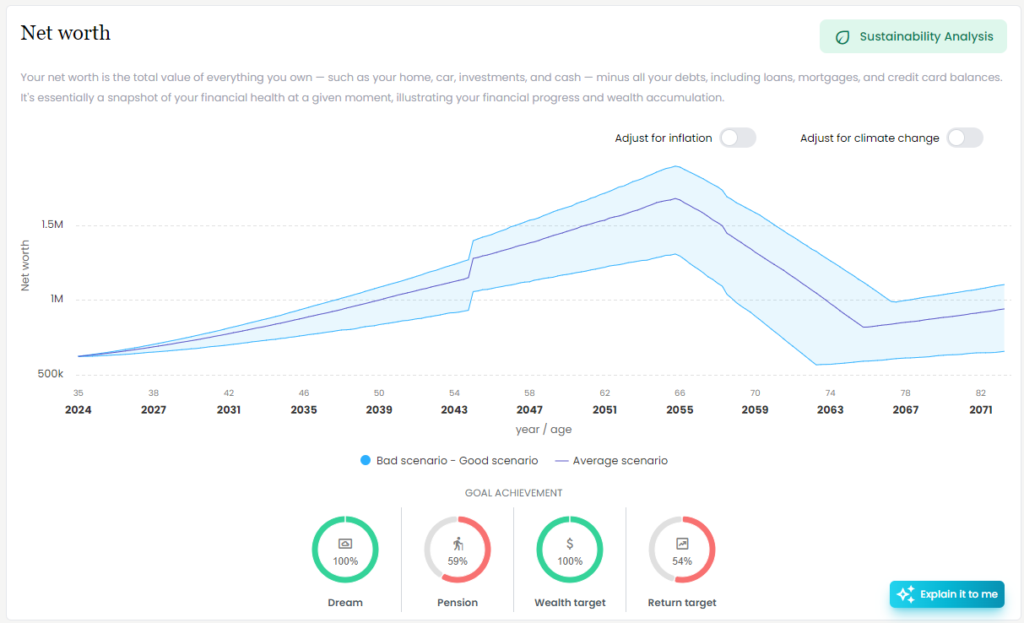We look forward to presenting you our solution that addresses the megatrend of hyper-personalisation in wealth management: fully automated wealth planning in thousands of market scenarios, resulting in bespoke strategic asset allocations!
Wealth managers today struggle with declining margins as a result of increased costs and a reduced clients’ willingness to pay. Consequently, they explore new technologies like Artificial Intelligence or Blockchain with unclear outcomes, but they hardly question the established and standardised elements of their advisory process: the client’s strategic asset allocation, mostly referred to as “investment strategy” in wealth management. The strategic asset allocation is the crucial element when investing and contributes around 90% to the variability of a portfolio.
While investment strategies in Wealth Management remain standardised, hyper-personalisation is considered a new megatrend: new technologies are making it easier to tailor products and services to the needs of individual customers.
To find out what the wealth management industry could learn from other industries which have gone through the digital transformation already, let us have a look at the car industry: in the past, cars were sold in a few limited combinations. Nowadays, they can be customised in millions of combinations to exactly fit the specific client’s requirements.
Considering the above example, it is difficult to understand why wealth managers hardly question the standardised elements of their advisory process. They continue using standardised investment strategies instead of providing a solution that tailors the investment strategy to each customer’s personal needs and preferences.
Why do wealth managers hardly question standardised investment strategies when it is well established that the asset allocation is the crucial element of the advisory process?
Let’s have a look at the determinants of the optimal investment strategy for each client:
How much risk do I need to achieve my specific financial goals?
As part of the client profiling, clients are often asked why they invest. Typically, wealth managers use this information to establish the planning horizon, but they rarely quantify financial goals, liabilities, savings and contributions. They neither map them onto a timeline nor use a professional asset- and liability management system as this is primarily available to few professionally managed pension funds.
Unfortunately, the client’s goals, liabilities, savings and contributions determine the amount of risk (risky assets) needed and as such the investment strategy to a large extent.
What part of the total wealth do I want to use to achieve my financial goals?
Wealth managers tend to focus only on one aspect of the client’s wealth: booked or bankable assets. However, this does not suffice: besides bankable assets, there are many other assets that can be used to achieve financial goals: real estate, private equity, pensions, art, which are often forgotten, even though they may be essential in reaching financial goals.
It is of utmost importance to identify all assets which the client is willing to use in order to achieve the financial goals. The investment strategy is directly affected, as such assets reduce the risk the client is required to take to achieve the financial goals.
How strong is my loss aversion in good and adverse markets?
Today, wealth managers normally derive the strategic asset allocation directly from the client’s risk profiling that aims to identify the client’s risk capacity and risk tolerance. Unfortunately, the risk tolerance cannot be easily identified, as it is subject to multiple behavioural biases as outlined in various articles or movies by Dr Thorsten Hens, Professor of Financial Economics at the University of Zurich. Further, the risk tolerance is dynamic and as such fluctuating depending on the market situation. Such biases are hardly considered by wealth managers and often lead to the outcome that long-term and crucial investment strategy decisions are not adhered to.
In short, the ideal investment strategy depends on three questions: their answers are highly individual and justify the need for a tailor-made investment strategy.
How to derive the ideal investment strategy for a client?
The 3rd-eyes analytics solution addresses all of the above aspects:
How much risk do I need to achieve my specific financial goals?
Our solution searches for the best possible strategic asset allocation considering the client-specific financial goals and thousands of capital market scenarios. In a typical investment universe with 12 asset classes, there are effectively 100^12 (= 10^24) possible allocations if we consider allocations in 1%-steps. The optimisation selects the best portfolio from this large set, testing it against thousands of capital market and inflation scenarios, resulting in a very robust outcome.
The optimisation used for this purpose is multi-periodic: the best possible goal achievement normally depends on assets’ returns and cash flows over many years. We do not simply optimise over the next time period, but consider the long-term wealth development of the client accurately has to be considered in each optimisation step. Also, we do not assume that the asset returns follow a simple statistical distribution such as a normal distribution, but we use a set of scenarios that include tail events (such as significant market crashes or economic environments with low-interest rates/inflation). This addresses all situations adequately where a risk model like Markowitz’s mean-variance and Black Litterman model fails.
In summary, the optimisation is very different from other solutions based on the existing mean-variance framework: we use a Monte Carlo optimisation that offers flexibility in specifying the optimisation target functions (e.g., optimise goal achievement, minimise drawdown, etc.).
What part of the total wealth do I want to use to achieve my specific financial goals?
As outlined above, it is crucial to consider all assets that can be used to achieve goals. If crucial assets to the client are not considered, the client will end up with a too risky investment strategy that would worsen the client’s situation. With the 3rd-eyes solution, all clients’ assets are considered, be it real estate, private equity, pensions and the like. Each asset can be individually selected, whether it is to be used to increase the goal achievement probability or not.
How strong is my loss aversion in good and adverse markets?
Our solution allows to use any risk profiling: be it a regulatory profiling according to the German WpHG standard which is most descriptive, or any other behavioural based risk profiling. Our B2B clients decide what kind or risk profiling they wish to use.
Related News
Blog, Press
11 July 2019
Interview with CEO Stephanie Feigt in the Frankfurter Allgemeine Zeitung (FAZ)
Blog, Press
11 July 2019









